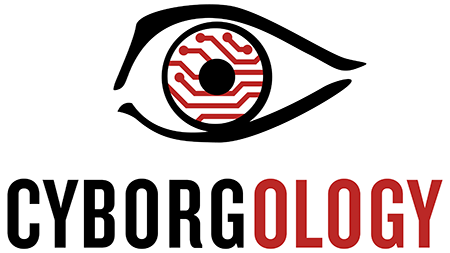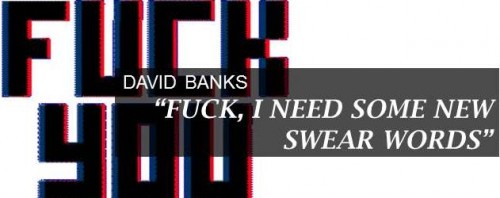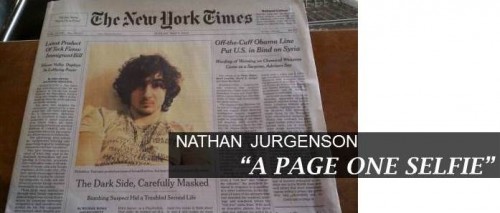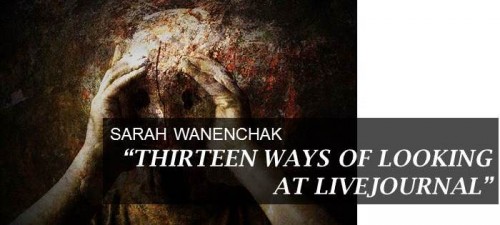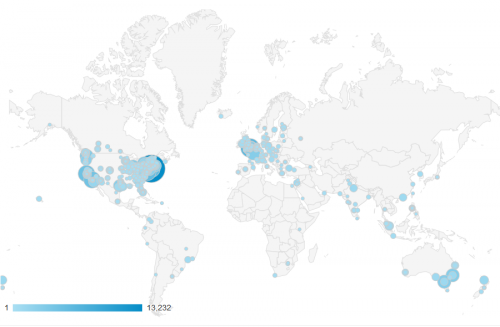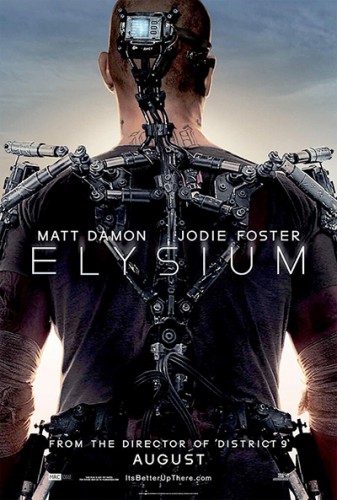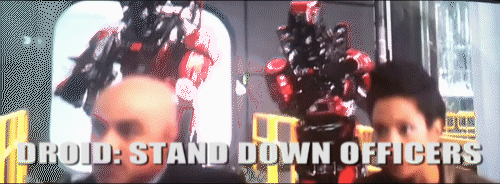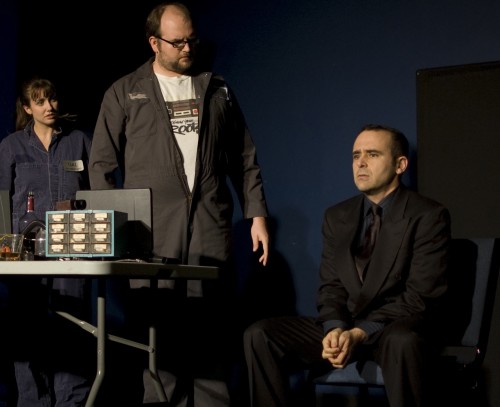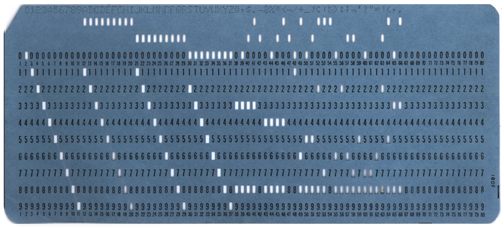
When someone sends a text to my phone, are they any less responsible for their comments than if they had said the same thing face-to-face? If someone says a photo I post is “unflattering” or “unprofessional,” do I feel like this says something about me as a person? Why has it become so common to equate the unauthorized use of someone else’s Facebook account to the violation experienced during rape, that the term “fraping”* has come into popular usage? These are some of the questions I think that digital dualism prevents us from answering satisfactorily. In framing an alternative to dualist thinking, I argue that it is important to account for people’s changing sense of self (hinted at in the examples above). To do this, we must examine the material conditions of subjectivity, or, put simply, how what we are affects who we are.
Interestingly, my argument that we ought to take serious account of people’s changing sense of self closely aligns me with with Nick Carr’s recent counter to the digital dualism critique. In fact, in re-reading his post, I realize that he is arguing for almost exactly the kind of theoretical frame work that I am working to develop. Carr argues:
there is a tension between online experience and offline experience, and people are smart enough to understand, to feel, that the tension does not evaporate as the online intrudes ever further into the offline. In fact, the growing interpenetration between the two modes of experience—the two states of being—actually ratchets up the tension… There’s no reason to believe that grappling with the online and the offline, and their effects on lived experience and the formation of the self, won’t also produce important thinking and art.
I think Carr is dead on in saying that our experience of self is transforming in light of the shifts in the material nature of the world (i.e., the emergence of digital media). However, I have two problems with his framing of the issue. The first issue is merely semantic. The use of the terms “online” and “offline” (which I am attempting to purge from my vocabulary) sets up a rigid separation between physical and digital media. Much like a light switch imposes a binary on otherwise variable electric current, online/offline cognitively pushes us toward thinking of physical and digital media as necessarily separate. Worse, it differentiates digital from physical media by applying a physical descriptor (i.e., “on”) to digital media.
The second, and more substantive issue, is that, though Carr forcefully argues that we cannot ignore our subjective experience of digital media, he paradoxically argues that our physical environment has an immutable essence that seems to transcend the contingency of experience:
Nature existed before technology gave us the idea of nature. Wilderness existed before society gave us the idea of wilderness. Offline existed before online gave us the idea of offline. Grappling with the idea of nature and the idea of wilderness, as well as their contrary states, has been the source of much of the greatest philosophy and art for at least the last two hundred years. We should celebrate the fact that nature and wilderness have continued to exist, in our minds and in actuality, even as they have been overrun by technology and society.
Carr seems to be operating with a deterministic understanding of the relationship between the objective nature and subjective experience of things (i.e., the objective nature causes the subjective experience of thing), whereas, since Kant, Western philosophy has tend to embrace a dialectical understand of the relationship between objective nature and subjective experience. A dialectical approach allows us, for example, to claim (as Nathan Jurgenson does in his IRL Fetish essay) that the emergence of digital media has irrevocably altered how we experience physical media (and there is no going back).
I contend that experience is even more important than Carr suggests–that, while there is, of course, a material nature to things, we can never know reality beyond our experience of it. If we accept my premise (which is commonly held in mainstream Western philosophy), then the fetishization of wilderness is not a fetishization of the thing itself, but a fetishization of an experience produced in part by nature but also, in part, by all the cultural baggage we carry with us as humans socialized by 21st Century institutions. (David Banks made a similar critique Carr’s piece, saying “we are always already augmented.”)
Of course, in the same vein that Plato argued the advent of writing produced inferior forms of human consciousness, we can, theoretically, argue that digital mediation has corrupted human consciousness. But, the example from Plato demonstrates that even the digital mediation of human consciousness is historically contingent. In short, there is no natural state for human consciousness. And, as such, there is no primitive or essential experience of nature. Wilderness may have existed before society, but we never experienced it as such. Offline may have existed before online, but we can no longer experience it as such.
***
In light of Carr’s piece, Whitney Erin Boesel and Nathan Jurgenson have both written excellent posts attempting to refine the concept of digital dualism by distinguishing subjective values/experience from the objective ontology of atoms and bits–that is to say, epistemology from metaphysics. While I laud these efforts to set scope conditions for the debate and to bring clarity to ambiguous terms like “reality,” there are costs to bracketing broad metaphysical questions like “What am I made of?”
I’d like to argue (like Katherine Hayles, Jason Farman, and others) that subjectivity is “medium specific.” That is to say, how we experience ourselves and how we come to know the world is shaped in meaningful ways by the materials that embody us. Materiality–whether physical or digital–shapes subjectivity. (Increasingly, our subjectivity is simultaneously embodied by both.) As John T. Sanders explains a “theory of embodied agency… is designed to offer a language that can be used to talk about how things are without commitment to a rigid subject/object dichotomy.”
It has always been a mistake to view social interaction and expressions of agency that are enacted through the body as natural or “unmediated” (for this reason, it is also problematic to talk about “unmediated publics“). It is more accurate to think of a face-to-face conversation, for example, as physically-mediated interaction. Similarly, we can think about how men and women have different physically-mediated experiences of walking down a city street at night.
In contrast to our tendency to normalize and naturalize physicality, we are accustomed to distinguishing actions and interactions that are facilitated by bits as digitally-mediated. In this case, I think common sense has it right. Being and interacting through Twitter, Facebook, or SMS is different than being and interacting through physical media. The properties of bits (such as those described by danah boyd–persistence, searchability, replicability, and in/visibility) matter.
The problem arises when we moralize and hierachicalize these ontological differences–when we say that digital mediation is inferior to physical mediation and, as such, diminishes the realness of a thing or experience. While this sort of moralizing about the the “virtual” and the “real” currently has great currency in our culture (in fact, one might argue that, we, as a culture, have embraced the most fantastical conceptualization of “cyberspace” possible so that we could most satisfyingly reject it), it is not a necessary outcome of recognizing the ontological separation between and unique properties of atoms and bits.
However, maintaining the material distinction between bits and atoms, physical and digital, isn’t as easy as just asserting that they are separate but equal. That would dismiss the ways that physical and digital media interrelate (and combine to embody our subjectivity), and it means falling back onto the very (digital) dualism we are trying to escape. What we need is a theory that can account for the objective differences in the physics of atoms and bits and subjective distinctiveness we experience when interacting through physical or digital media, while also accounting for the fact that we experience them as being enmeshed in very practical ways. This is no small order and is, no doubt, why the digital dualism debate persists.
Developing such a theory, I believe, is two-step process that requires us to collapse the rigid boundaries between two binary pairs: the subjective/objective and the physical/digital. However, as Jenny Davis cautions, this collapse should avoid the total erasure of difference.
To handle the fact that digital dualism makes interrelated claims about the objective (bits are different than atoms) and subjective (digital media is inferior to/less real than physical media) we need an approach that examines the relation between objective and subjective: namely, phenomenology.***
Let me avoid getting too lost in “the ontological weeds” and just say that a fundamental assumption of phenomenology is that objective and subjective reality are dialectically linked, so that, while the two cannot be fully collapsed into each other, neither exists for-us in isolation from the other. We can never directly experience an objective reality outside our subjective experience, yet our subjectivity, and our very consciousness, only comes into being through our interactions with that which objectively exists in the world. (For a more detailed explanation, read Hegel.)
Lucky for us, the sociology of technology already has a well-established phenomenological framework called the theory of affordances. As broadly defined by Donald Norman:
Affordance refers to the perceived and actual properties of the thing, primarily those fundamental properties that determine just how the thing could possibly be used… A chair affords (“is for”) support and, therefore, affords sitting.
Note that Norman refers to both our perceptions and the objective properties of an object.
Atoms and bits can and do have unique affordances, even as they remain within the same reality. But what’s important for us is that the theory of affordances assumed that what we percieve to exist as objects in the world is shaped by our subjective understanding of how things can be used. For example, I perceive a chair as a discrete object because I recognize it as something that can be sat in. However, if I need to build a fire, the wooden pieces may become salient as pieces separate from the whole of the chair. So, my subjective state conditions what the mass of matter previously associated with the chair is for-me. Sanders explains that
Understanding ontology in terms of affordances thus bridges gaps that would otherwise leave room for questions of relative priority between epistemology and metaphysics. One cannot talk about affordances without talking about both metaphysics and epistemology at the same time (or alternately, at least).
So, why do affordances matter to the digital dualism debate? Because affordances explain why I have distinct experiences of media comprised of atoms or bits. I can do different things with physical and digital media, and, in fact, their different properties seem to encourage me to behave differently. For example, several decades ago, would be unlikely that my mother would expect me to check in every few days or a few times a day with my partner. But the affordances of digital media have facilitated (though not necessitated–I don’t want to be too tech determinist) a shift in norms.
But wait, haven’t I just used affordances to make the case for digital dualism? Yes, the argument as it stands is very dualist in that it fails to account for how we also experience the physical and digital as enmeshed in practical and quite meaningful ways. Thus, we need to take a second step in this argument and erode the digital/physical binary. To do this effectively, I believe we need a new concept, which I will call co-affordances.****
Co-affordances describes situations where the affordances of two objects or two classes of object are mutually dependent. That is to say, how I experience the properties of one thing is determined, in part, by how I process and experience the other thing. We all assume atoms and bits interact on an objective level (capacitors and wires comprised of atoms are require to store and transmit bits) but the concept of co-affordance allows us to talk about how physical and digital media co-produce our experience and knowledge of each. Applied to the physical/digital binary, co-affordances allows us to describe how I both experience each medium as distinct but yet am conscious of the fact that they are interrelated. So, for example, I perceive using Facebook to plan events as useful, in part, because I am conscious of the relatively low transmission speed of paper invitations. At the same time, I perceive handwritten invitations as more meaningful precisely because I am aware of the greater efficiency of electronic messaging. In characterizing these examples, I can say electronic and handwritten messaging co-afford one another. The significance and utility of each is partially derivative or the other.
More broadly, we can say that physical media co-affords digital media. I do not have to use both to experience them as co-afforded. In fact, the decision to use one in lieu of the other will be meaningful precisely because of what media I am–willingly or unwillingly–forgoing. Paper books, for example, become a fetish object because of their more efficient (and less temporally-confined) alternative.
Importantly, this means that, even if reject the argument that human subjectivity is now embodied by two media simultaneously–that we are what Allucquére Rosanne Stone calls “split subjects“–we still have to acknowledge that our physical bodies are now co-afforded by digital media and, thus, may shape human subjectivity in new ways.
The concept of co-affordances allow us to talk about both the enmeshment and distinctiveness of physical and digital media without having to bracket or dismiss important issue of material embodiment. In fact, we now have a language to distinguish contemporary subjectivity from past epochs in history: Contemporary subjects are embodied by both atoms and bits–and necessarily so. Though it may be possible to avoid digitally-mediated interaction in the direct sense, physical media are inextricably co-afforded by digital media, making the influence of digital media on human subjectivity inescapable.
Tweet me @pjrey.
—————
* This term is both telling and deeply problematic. It merits a separate post (in progress).
** Though the two are certainly not mutually exclusive in a “cyborg ontology” à la Haraway.
*** Whitney Erin Boesel (in troubling the objective/subjective divide), Jenny Davis (in applying the work phenomenologist Judith Butler to the digital dualism debate), and Sarah Wanenchak (in discussing the “feels” of digital media) adopt a phenomenological approach without labeling it as such.
**** All my attempts to name this idea were lousy. Whitney Erin Boesel deserves much credit for coming up with this most eloquent term.

 In pain and apparently shaken by the termination of what had seemed like her best hope to get care, Alexander made several disconcerting tweets then ceased communicating altogether. All indications are that she attempted or was close to attempting suicide and was taken away by paramedics.
In pain and apparently shaken by the termination of what had seemed like her best hope to get care, Alexander made several disconcerting tweets then ceased communicating altogether. All indications are that she attempted or was close to attempting suicide and was taken away by paramedics.
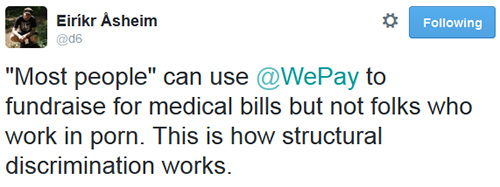 WePay’s CEO Bill Clerico took to Twitter to respond to the situation and, within a few hours, an official explanation was posted to the site (though, in a weird corporate-y way, it seems to assume that the text is being read on Monday and not the day it was posted):
WePay’s CEO Bill Clerico took to Twitter to respond to the situation and, within a few hours, an official explanation was posted to the site (though, in a weird corporate-y way, it seems to assume that the text is being read on Monday and not the day it was posted):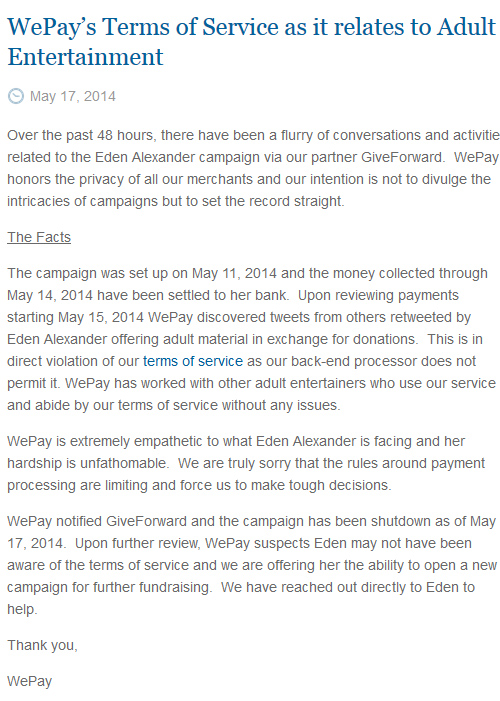
 Clerico also equivocated a bit, saying that not all WePay’s limitations on users were demanded by card associations: “Some are because they are prone to fraud or abuse.”
Clerico also equivocated a bit, saying that not all WePay’s limitations on users were demanded by card associations: “Some are because they are prone to fraud or abuse.” WePay’s response, predictably, amounts to the old “don’t blame us, blame the market” strategy of denying responsibility. This is the same pattern we recently witnessed with Paypal and Chase: Rather than working to find ways to conduct business without discrimination, execs shrug their shoulders and point to the markets as supposed justification for what, in this case, is not only unjust, but downright inhumane, treatment. We, the public, are expected to just resign our democratic values when the market deems them inconvenient.
WePay’s response, predictably, amounts to the old “don’t blame us, blame the market” strategy of denying responsibility. This is the same pattern we recently witnessed with Paypal and Chase: Rather than working to find ways to conduct business without discrimination, execs shrug their shoulders and point to the markets as supposed justification for what, in this case, is not only unjust, but downright inhumane, treatment. We, the public, are expected to just resign our democratic values when the market deems them inconvenient.
 What market logic does–when we fail to intervene demanding that humanitarian values be respected–is to reduce humans to mere risks and opportunities. Risk is stigma in market terms. Both flatten a person and mark them for exclusion. When a CEO says “sex workers are a risk,” they always, implicitly, mean “a risk–and nothing more.” The purpose of such language is to depersonalize and dehumanize and, thereby, to remove the moral impediments to exclusion.
What market logic does–when we fail to intervene demanding that humanitarian values be respected–is to reduce humans to mere risks and opportunities. Risk is stigma in market terms. Both flatten a person and mark them for exclusion. When a CEO says “sex workers are a risk,” they always, implicitly, mean “a risk–and nothing more.” The purpose of such language is to depersonalize and dehumanize and, thereby, to remove the moral impediments to exclusion.


